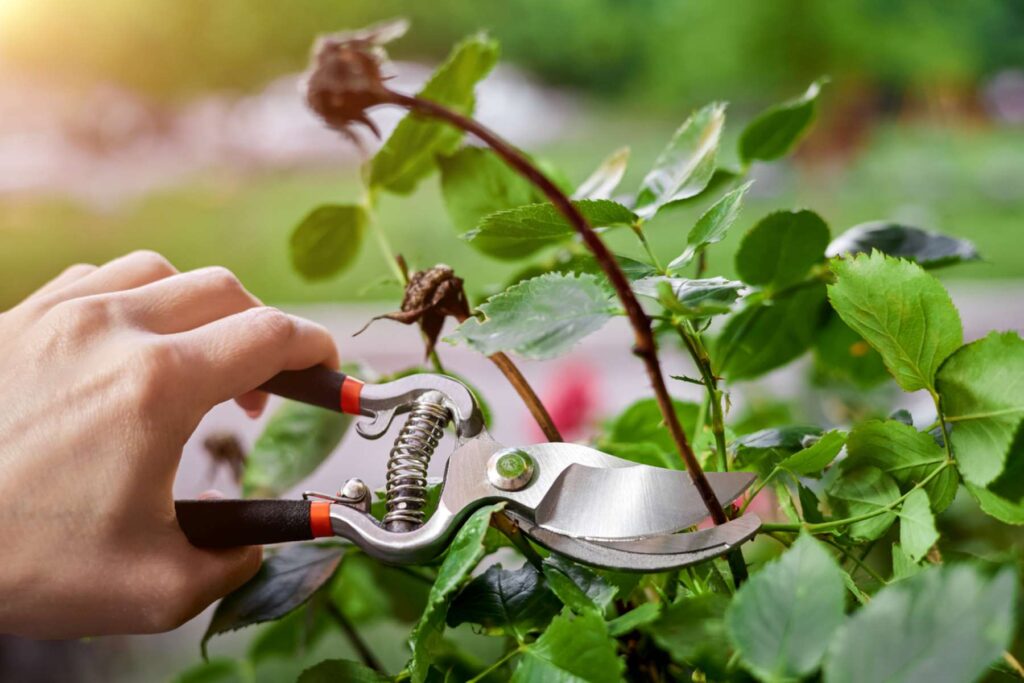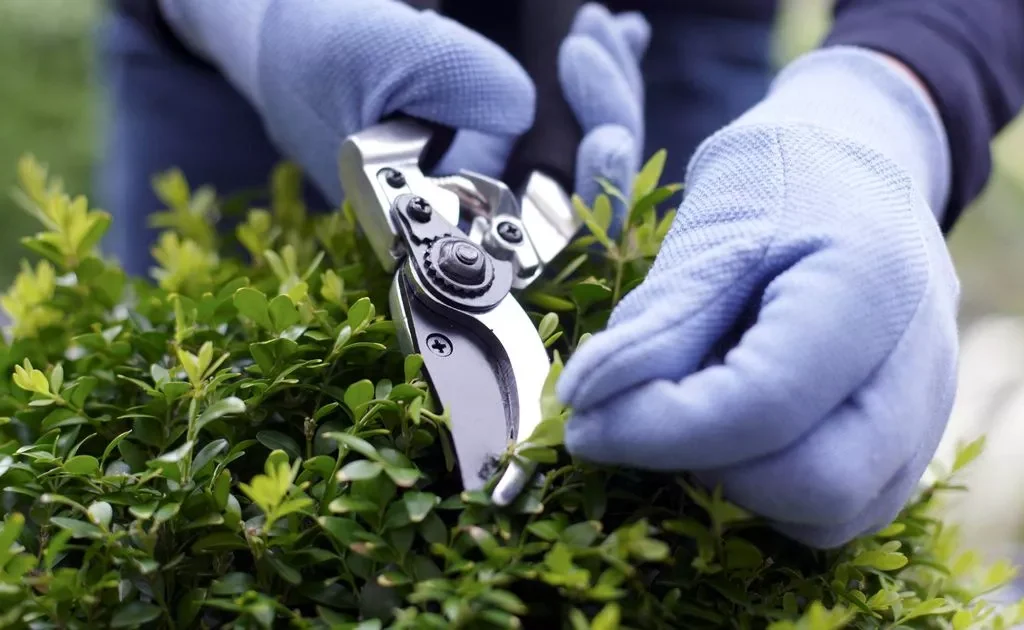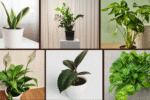Pruning is one of the most essential yet often misunderstood practices in gardening. Whether you’re tending to houseplants, flowering shrubs, trees, or vegetable gardens, proper pruning can make all the difference between a thriving, lush plant and a straggly, underwhelming one.
Many gardeners avoid pruning out of fear they might harm their plants — but with a little knowledge and the right technique, pruning becomes an empowering skill that helps plants grow healthier, look better, and live longer. In this detailed guide, we’ll explain how to prune plants effectively and why it’s the key to healthier growth.

What is Pruning?
Pruning is the act of selectively removing certain parts of a plant, such as branches, stems, buds, or roots. This can be done to:
- Remove dead, diseased, or damaged material
- Improve plant shape and structure
- Control plant size
- Encourage flowering and fruiting
- Enhance air circulation and light penetration
Different plants require different pruning approaches, but the core principles remain the same — strategic cuts made at the right time, using clean tools, with a purpose in mind.

Why Prune Plants?
Pruning isn’t just about keeping your plants tidy; it directly benefits their health and productivity. Here are the key reasons you should prune:
Remove Dead, Diseased, or Damaged Parts
Dead or diseased wood can harbor pests and pathogens. Removing these parts prevents the spread of disease and encourages the plant to direct energy into healthy growth.
Shape and Control Size
Pruning helps maintain an attractive form, prevents plants from becoming too leggy or overgrown, and ensures they fit within their allotted space in the garden or home.
Stimulate New Growth
By removing older or weaker stems, you allow fresh, vigorous shoots to take their place — often resulting in more lush foliage or better blooms.
Encourage Flowering and Fruiting
Certain flowering and fruiting plants, like roses or citrus trees, bloom more profusely when pruned correctly. Pruning encourages the growth of productive stems.
Improve Airflow and Light Penetration
Thinning out dense growth improves air circulation and allows sunlight to reach the interior of the plant, reducing the risk of fungal infections and promoting even growth.

Tools You’ll Need for Pruning
Before you start, gather the right tools for the job:
- Hand pruners: For small stems and branches up to ¾ inch thick.
- Loppers: For branches ¾ to 2 inches thick.
- Pruning saw: For branches thicker than 2 inches.
- Scissors or snips: For soft houseplants and herbs.
- Gloves: To protect your hands from thorns and debris.
- Rubbing alcohol or disinfectant: For sterilizing tools before and after use.
Tip: Always use sharp, clean tools for smooth cuts that heal faster and reduce disease risk.

When Should You Prune Plants?
The ideal pruning time depends on the plant species and its growth habits:
- Spring-flowering shrubs (like lilacs, forsythia): Prune immediately after blooming.
- Summer-flowering plants (like hibiscus, butterfly bush): Prune in late winter or early spring before new growth starts.
- Deciduous trees and shrubs: Late winter while dormant.
- Evergreens: Late spring or early summer.
- Houseplants: Any time, but best in spring/summer during active growth.
Avoid heavy pruning in fall, as new growth may not harden before winter arrives.
How to Prune Plants: Step-by-Step
Here’s a general pruning method you can apply to most plants:
Step 1: Inspect the Plant
Check for dead, damaged, or diseased branches. Look for weak, crowded, or crossing stems.
Step 2: Make Clean, Strategic Cuts
Use sharp, disinfected tools. Cut at a 45-degree angle about ¼ inch above a healthy bud or branch junction. This helps water run off the cut surface and encourages proper healing.
Step 3: Remove the 3 D’s
Start by cutting away:
- Dead wood
- Diseased branches
- Damaged parts
This immediately improves plant health.
Step 4: Thin Out Crowded Growth
Cut out stems that rub against others or clutter the plant’s center, allowing air and light to reach the interior.
Step 5: Shape the Plant
Maintain a balanced shape by cutting back long or unruly branches. Remove weak stems and reduce overall height if necessary.
Step 6: Encourage Flowering (if applicable)
On flowering plants, cut just above outward-facing buds or nodes to direct growth outward and increase bloom production.
Special Pruning Techniques
Depending on your plant type, you might need one of these specialized pruning methods:
Pinching
Use your fingers to remove soft tips from young plants (like herbs or annuals) to encourage bushier growth.
Deadheading
Remove spent flowers to promote new blooms and prevent seed formation.
Thinning
Remove entire branches or stems to open up a plant’s structure without reducing overall size too much.
Heading Back
Cut a stem back to a lateral bud to encourage bushier growth or control size.
Rejuvenation Pruning
For old, overgrown shrubs, cut back ⅓ of the oldest stems to the ground each year for three years to renew the plant gradually.
How to Prune Common Plant Types
Houseplants:
Trim leggy stems and yellowing leaves regularly. Pinch back fast-growing tips on trailing or vining plants.
Shrubs:
Prune immediately after flowering (spring bloomers) or before new growth appears (summer bloomers). Remove up to ⅓ of the plant’s size per year.
Trees:
Focus on removing crossing, dead, or diseased branches. Always maintain the natural shape and avoid over-thinning.
Climbers and Vines:
Cut back long runners and train new growth. Remove old wood and spent blooms.
Perennials:
Deadhead regularly. In late fall, cut back most perennials to ground level once they die back.
Common Pruning Mistakes to Avoid
| Mistake | Why It’s a Problem | How to Fix It |
|---|---|---|
| Cutting too close to a bud | Can damage the bud | Leave a ¼ inch gap above the bud |
| Leaving stubs | Causes dieback and rot | Cut cleanly just above a bud or branch junction |
| Pruning at the wrong time | Can reduce blooms or weaken plant | Learn the plant’s growth cycle and ideal pruning season |
| Over-pruning | Stresses the plant | Limit cuts to no more than ⅓ of the plant annually |
Aftercare for Pruned Plants
After pruning:
- Water thoroughly to help recovery.
- Apply a balanced fertilizer during the growing season.
- Keep an eye on the plant for signs of stress or new growth.
- Dispose of diseased material properly — do not compost it.
Final Thoughts
Pruning is not just about keeping plants neat — it’s a fundamental technique that directly contributes to healthier, stronger, and more beautiful plants. Whether you’re managing a lush backyard garden, a few patio containers, or indoor houseplants, learning how to prune plants properly ensures they stay vibrant, productive, and long-lived.
The key lies in knowing your plant’s growth habits, pruning at the right time, using clean tools, and making careful, thoughtful cuts. As you gain confidence, you’ll notice your plants responding with fuller foliage, brighter blooms, and vigorous growth.
So grab your shears, inspect your plants, and give them a fresh trim — you’ll be amazed at how much happier they’ll look and feel!
Happy pruning!





Leave A Comment